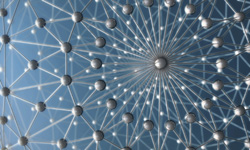Making better networks
The modern world increasingly relies on various kinds of networks. All consist of nodes and links, yet much remains unknown about the most efficient ways of connecting them. This is an important practical matter because modern life demands intense data processing power, and one way to provide that is via parallel computing. In this regard, concepts from networking theory, called network topology, are highly applicable. In general, a network performs better if its nodes are not connected to too many others, if the maximum distance between any two nodes is small, and if all nodes behave alike. Yet sometimes budget or other realities constrain network design. An EU-funded project, 'Optimal interconnection networks' (OPTIMAL NETWORKS) is investigating theoretical mathematical factors influencing network topology using graph theory (network diagrams). One project goal was to study the mathematical problem of creating the largest possible graphs for given parameters, and to determine the upper bound on the largest possible number of nodes in networks given a certain number of connections per node. Except in a few cases, the size of optimal graphs is largely unknown. OPTIMAL NETWORKS' research is intended to determine new optimal graphs, to reveal their underlying structures, and to probe their exploitable properties. Ultimately, the purpose is to improve the performance boundaries of a given network, which has been the case during the reporting period. These significant results have been published in seven refereed journal articles; several other articles are in press or have been submitted. Another objective of this project was to establish an ongoing collaboration with other study groups, which has also been achieved. This has resulted in spin-off collaborations. The project's results mean extension of the relevant theories, as well as improved practical methods and network performance.







